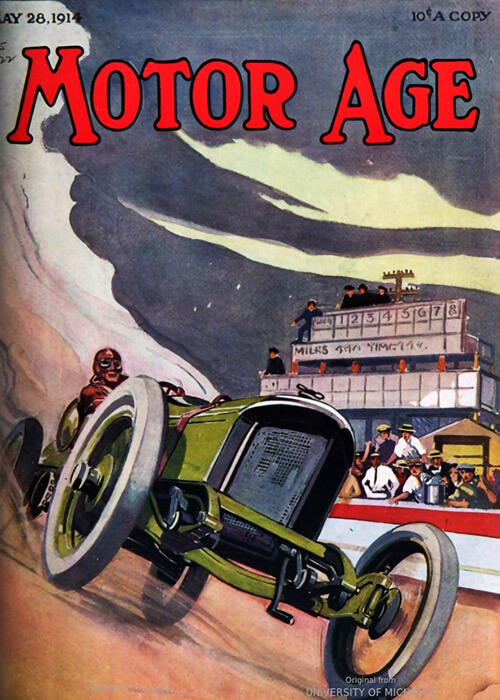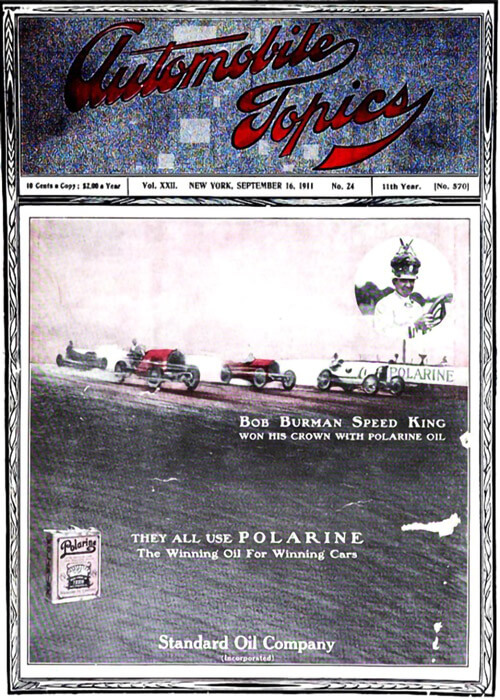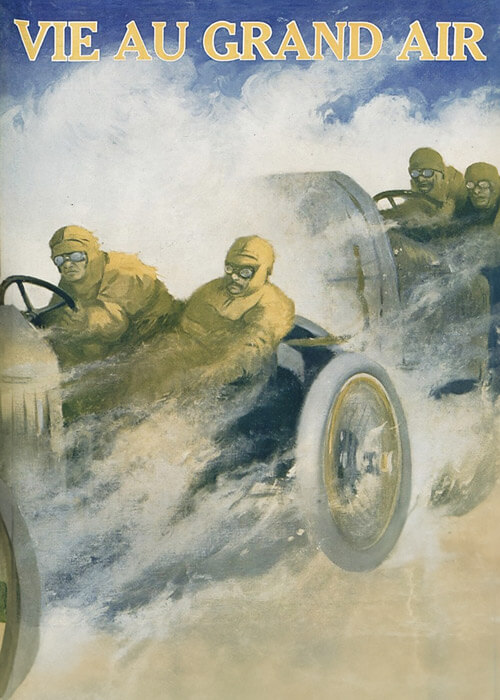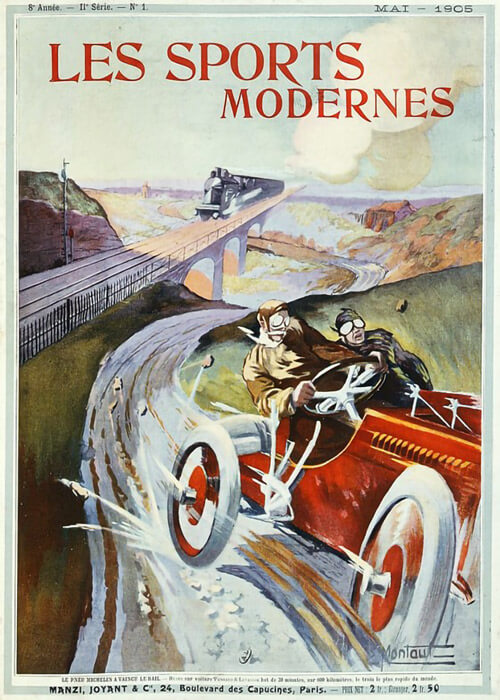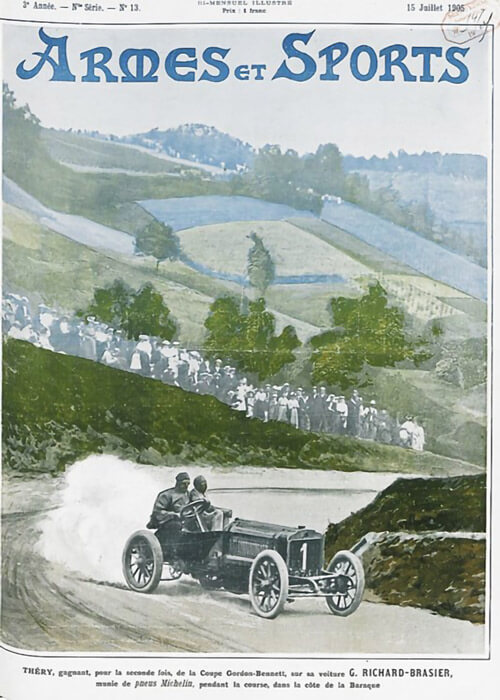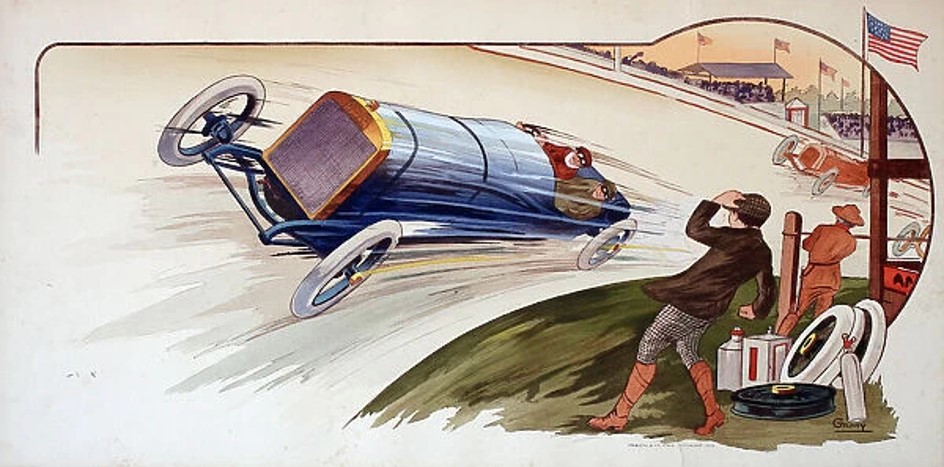After the first ever 500 Mile Sweepstakes on the Indianapolis Speedway, the now famous and well known Carl Fischer wrote in MoToR a summary of his view on the most significant experiences of this race. It becomes evident, how important an automotive supplier industry was, not only for the automobile manufacturing industry in general, but also for motor racing and for racing car development itself. Reading this, it becomes more clear how keen his views on motor racing were back then.
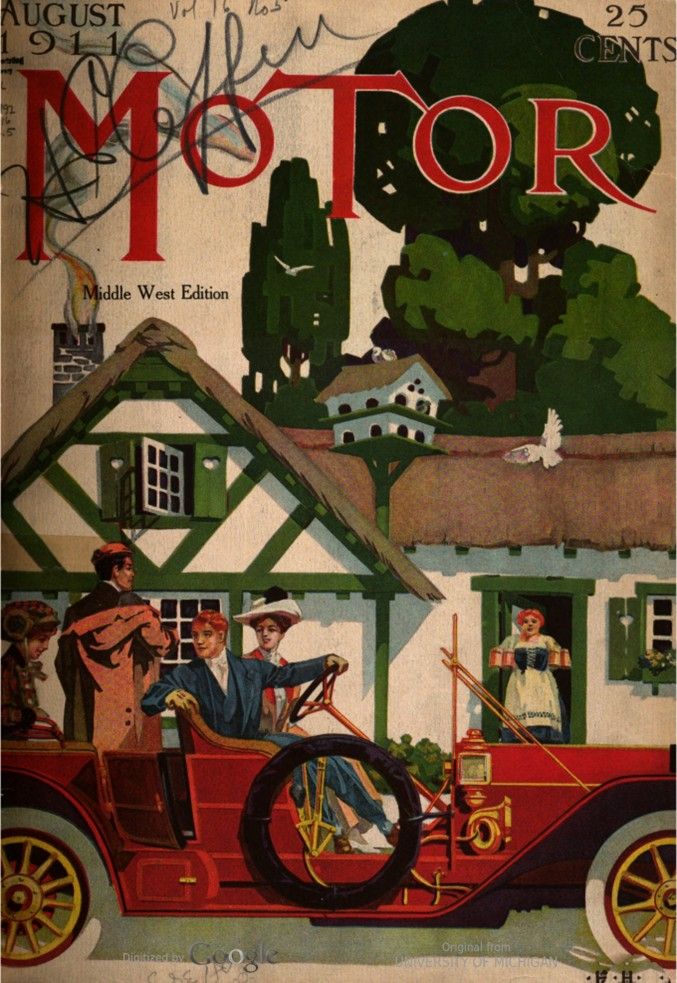
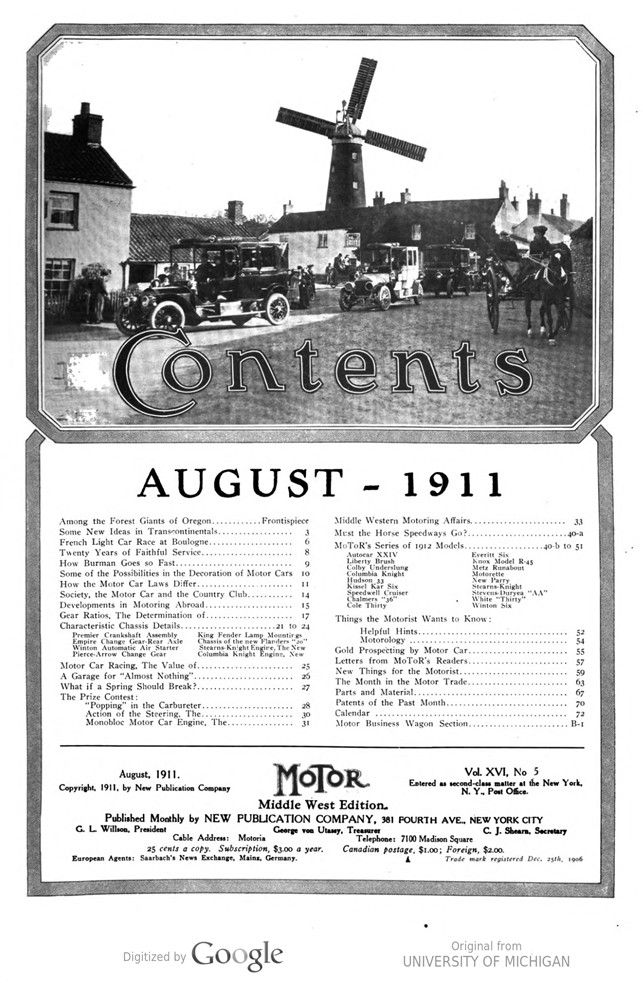
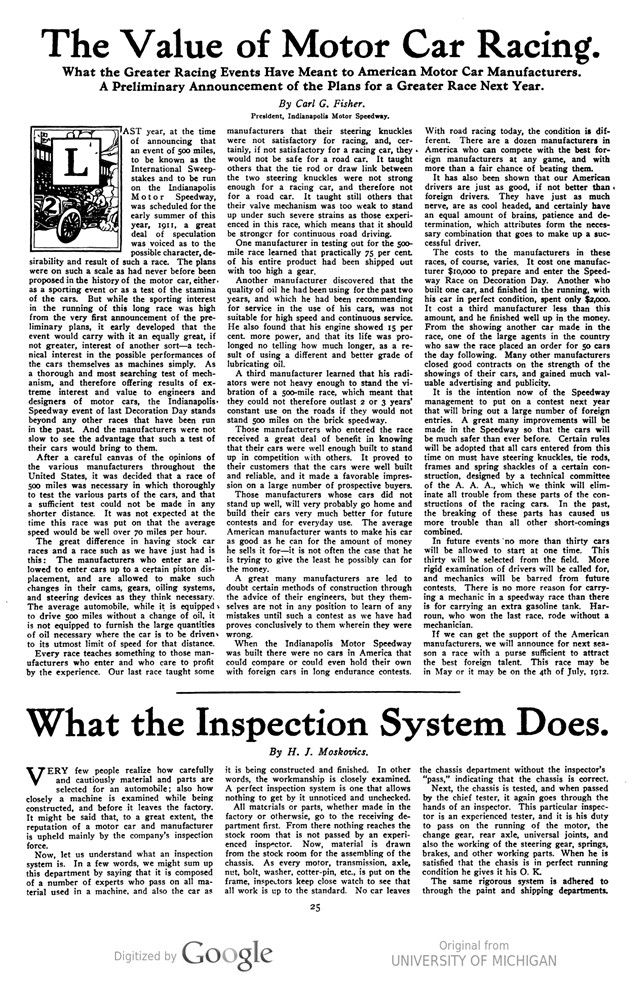
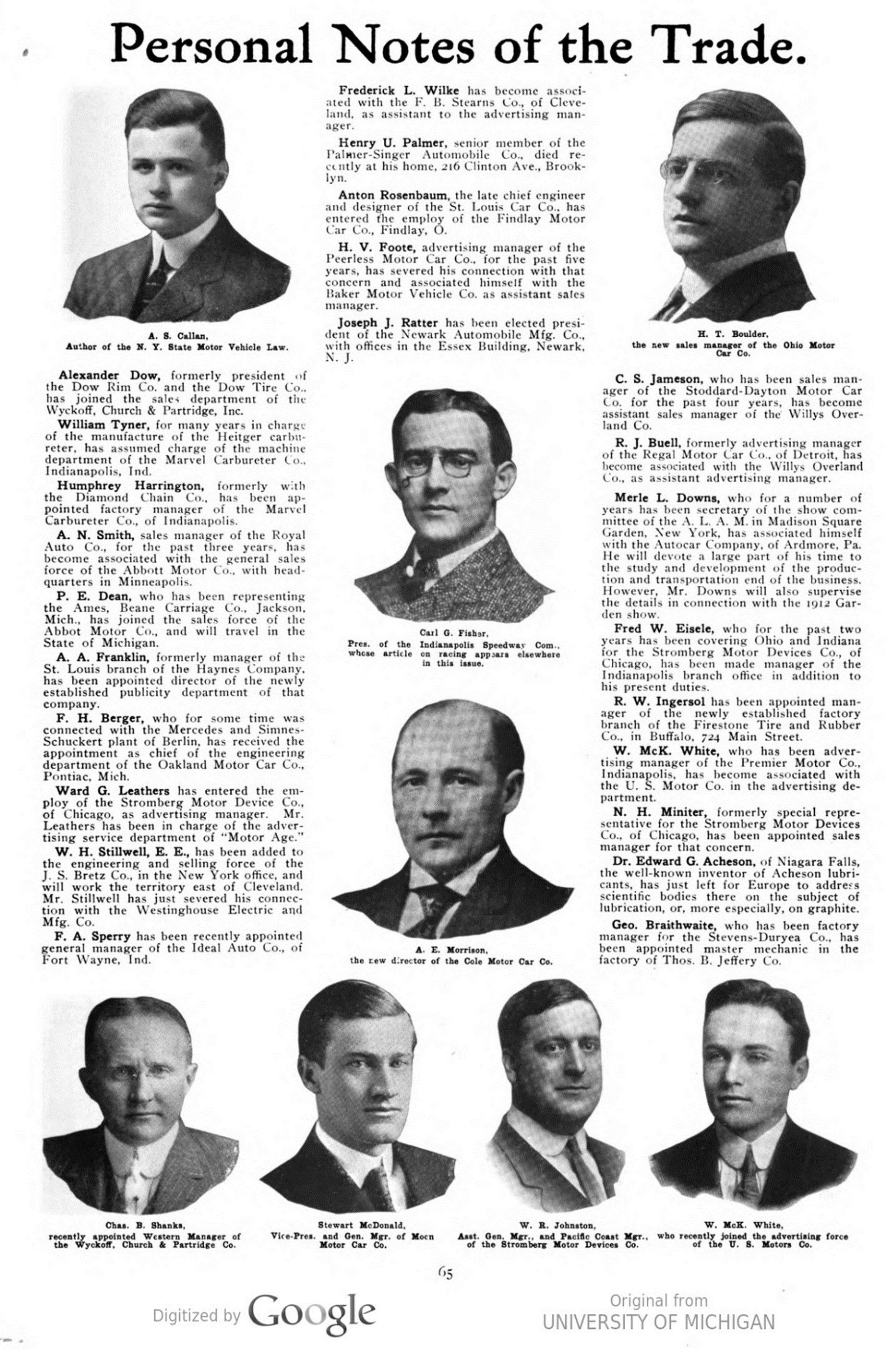
Text and jpegs by courtesy of hathitrust.org www.hathitrust.org, compiled by motorracinghistory.com
MoToR, Vol. XVI, August 1911
The Value of Motor Car Racing.
What the Greater Racing Events Have Meant to American Motor Car Manufacturers.
A Preliminary Announcement of the Plans for a Greater Race Next Year.
By Carl G. Fisher. President, Indianapolis Motor Speedway.
LAST year, at the time of announcing that an event of 500 miles, to be known as the International Sweepstakes and to be run on the Indianapolis Motor Speedway, was scheduled for the early summer of this year, 1911, a great deal of speculation was voiced as to the possible character, desirability and result of such a race. The plans were on such a scale as had never before been proposed in the history of the motor car, either as a sporting event or as a test of the stamina of the cars. But while the sporting interest in the running of this long race was high from the very first announcement of the preliminary plans, it early developed that the event would carry with it an equally great, if not greater, interest of another sort – a technical interest in the possible performances of the cars themselves as machines simply. As a thorough and most searching test of mechanism, and therefore offering results of extreme interest and value to engineers and designers of motor cars, the Indianapolis Speedway event of last Decoration Day stands beyond any other races that have been run in the past. And the manufacturers were not slow to see the advantage that such a test of their cars would bring to them.
After a careful canvas of the opinions of the various manufacturers throughout the United States, it was decided that a race of 500 miles was necessary in which thoroughly to test the various parts of the cars, and that a sufficient test could not be made in any shorter distance. It was not expected at the time this race was put on that the average speed would be well over 70 miles per hour.
The great difference in having stock car races and a race such as we have just had is this: The manufacturers who enter are allowed to enter cars up to a certain piston displacement, and are allowed to make such changes in their cams, gears, oiling systems, and steering devices as they think necessary. The average automobile, while it is equipped to drive 500 miles without a change of oil, it is not equipped to furnish the large quantities of oil necessary where the car is to be driven to its utmost limit of speed for that distance.
Every race teaches something to those manufacturers who enter and who care to profit by the experience. Our last race taught some manufacturers that their steering knuckles were not satisfactory for racing, and, certainly, if not satisfactory for a racing car, they would not be safe for a road car. It taught others that the tie rod or draw link between the two steering knuckles were not strong enough for a racing car, and therefore not for a road car. It taught still others that their valve mechanism was too weak to stand up under such severe strains as those experienced in this race, which means that it should be stronger for continuous road driving.
One manufacturer in testing out for the 500-mile race learned that practically 75 per cent of his entire product had been shipped out with too high a gear.
Another manufacturer discovered that the quality of oil he had been using for the past two years, and which he had been recommending for service in the use of his cars, was not suitable for high speed and continuous service. He also found that his engine showed 15 per cent more power, and that its life was prolonged no telling how much longer, as a result of using a different and better grade of lubricating oil.
A third manufacturer learned that his radiators were not heavy enough to stand the vibration of a 500-mile race, which meant that they could not therefore outlast 2 or 3 years constant use on the roads if they would not stand 500 miles on the brick speedway.
Those manufacturers who entered the race received a great deal of benefit in knowing that their cars were well enough built to stand up in competition with others. It proved to their customers that the cars were well built and reliable, and it made a favorable impression on a large number of prospective buyers.
Those manufacturers whose cars did not stand up well, will very probably go home and build their cars very much better for future contests and for everyday use. The average American manufacturer wants to make his car as good as he can for the amount of money he sells it for – it is not often the case that he is trying to give the least he possibly can for the money.
A great many manufacturers are led to doubt certain methods of construction through the advice of their engineers, but they themselves are not in any position to learn of any mistakes until such a contest as we have had proves conclusively to them wherein they were wrong.
When the Indianapolis Motor Speedway was built there were no cars in America that could compare or could even hold their own with foreign cars in long endurance contests. With road racing today, the condition is different. There are a dozen manufacturers in America who can compete with the best foreign manufacturers at any game, and with more than a fair chance of beating them.
It has also been shown that our American drivers are just as good, if not better than foreign drivers. They have just as much nerve, are as cool headed, and certainly have an equal amount of brains, patience and determination, which attributes form the necessary combination that goes to make up a successful driver.
The costs to the manufacturers in these races, of course, varies. It cost one manufacturer $10,000 to prepare and enter the Speedway Race on Decoration Day. Another who built one car, and finished in the running, with his car in perfect condition, spent only $2,000. It cost a third manufacturer less than this amount, and he finished well up in the money. From the showing another car made in the race, one of the large agents in the country who saw the race placed an order for 50 cars the day following. Many other manufacturers closed good contracts on the strength of the showings of their cars, and gained much valuable advertising and publicity.
It is the intention now of the Speedway management to put on a contest next year that will bring out a large number of foreign entries. A great many improvements will be made in the Speedway so that the cars will be much safer than ever before. Certain rules will be adopted that all cars entered from this time on must have steering knuckles, tie rods, frames and spring shackles of a certain construction, designed by a technical committee of the A. A. A., which we think will eliminate all trouble from these parts of the constructions of the racing cars. In the past, the breaking of these parts has caused us more trouble than all other shortcomings combined.
In future events no more than thirty cars will be allowed to start at one time. This thirty will be selected from the field. More rigid examination of drivers will be called for, and mechanics will be barred from future contests. There is no more reason for carrying a mechanic in a speedway race than there is for carrying an extra gasoline tank. Harroun, who won the last race, rode without a mechanician.
If we can get the support of the American manufacturers, we will announce for next season a race with a purse sufficient to attract the best foreign talent. This race may be in May or it may be on the 4th of July, 1912.
